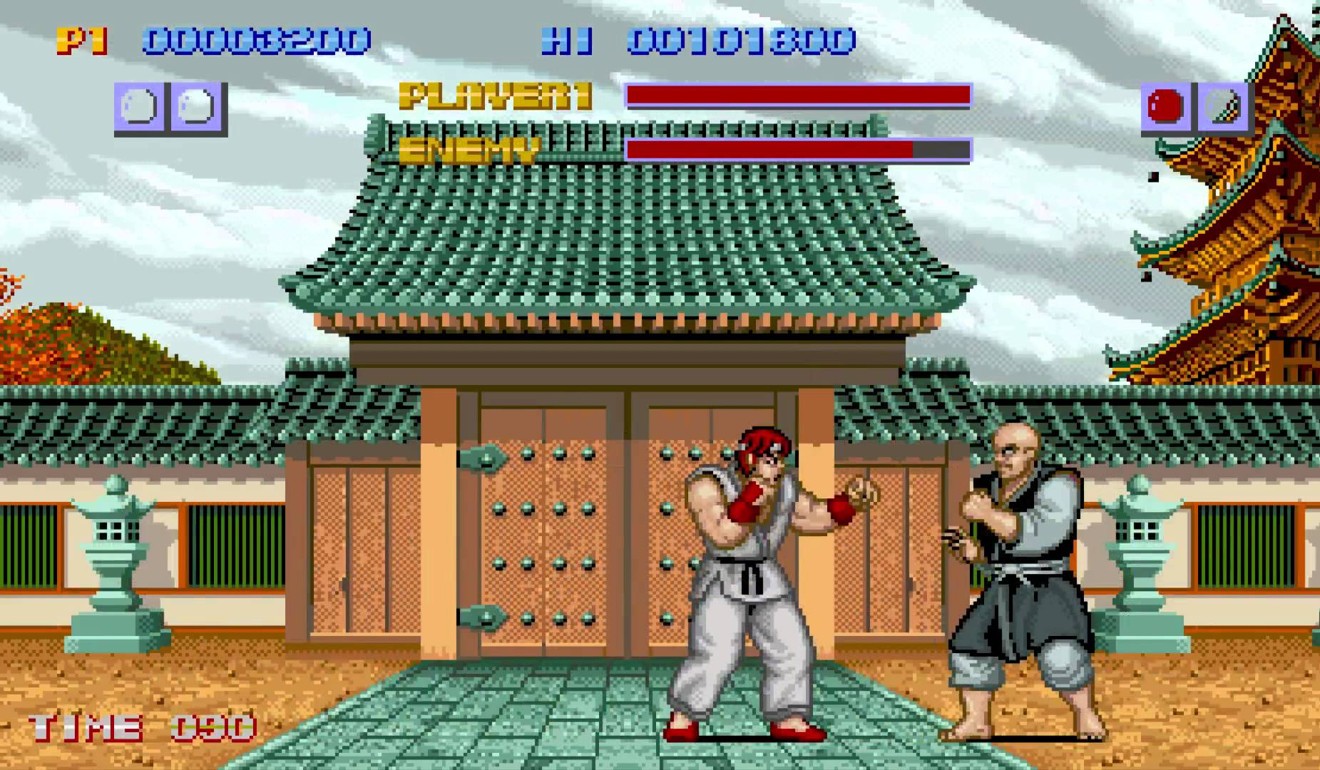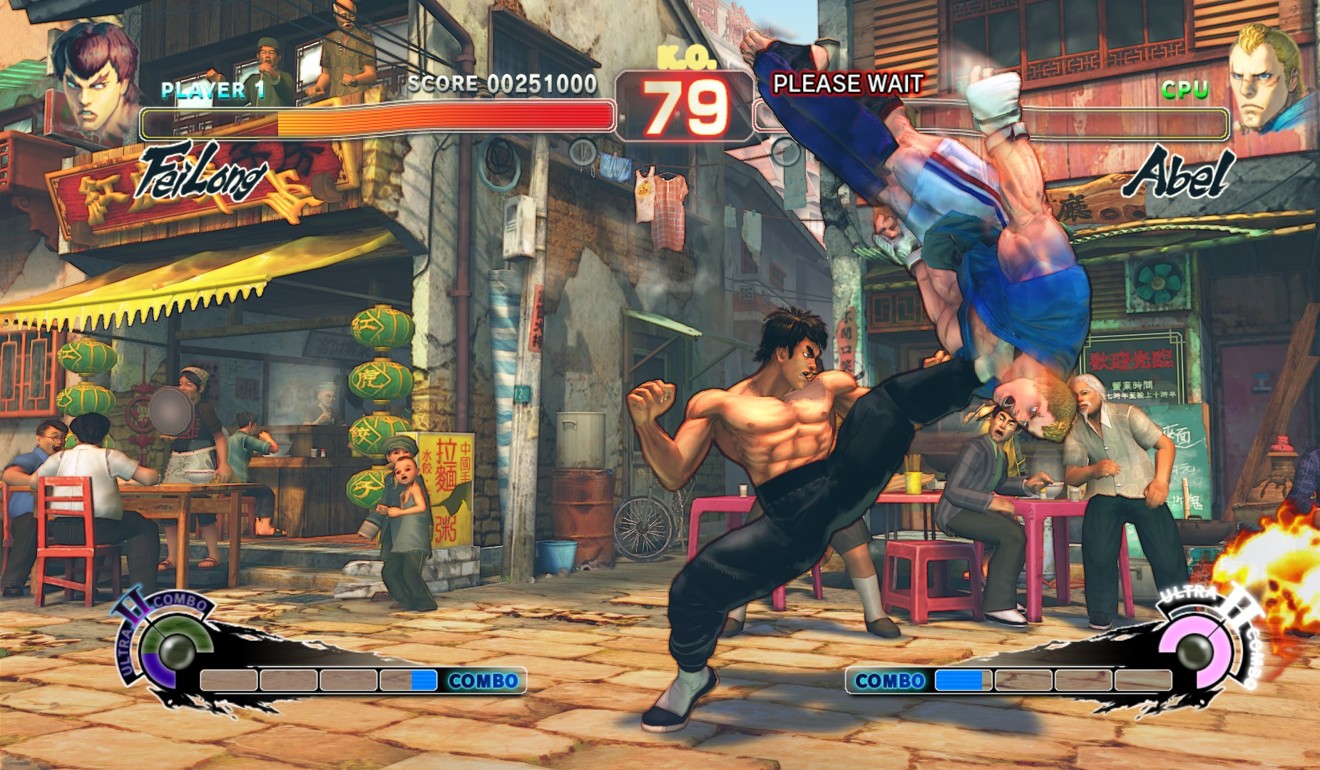Street Fighter: a look at the video game’s 31 years in the arena and the best titles in the series
It all started in 1987 as an arcade game with two fighters and simple controls. We follow the bestselling series – and its spin offs and terrible films – to the present day and its 30th anniversary release

The game Street Fighter is synonymous with the fighting genre, a pop-culture classic familiar to all ages, whether it’s the millennial with multiple consoles or the baby boomer who blames violence on gaming.
The franchise is celebrating 31 years of roundhouse kicks and uppercuts with this week’s release of the 30th Anniversary Collection, which brings together 12 of the best arcade versions of the game. We trace the history of the series produced by Japanese game developer Capcom through its many landmarks, while offering up the best entries in the surprisingly diverse franchise.

The beginnings: 1987
Street Fighter has humble origins – the simplistic first entry in the series was released for arcades to minor acclaim in 1987. Button mashers could only play as the characters Ryu or Ken, battling it out with simple punches and kicks.
Some of the opponents would later become playable characters, including heavyweight boxer Mike and ninja Genki. The debut is a relatively minor entry in the series and its two creators probably had no doubt what they had unleashed.

The golden era: 1991 to 1995
Capcom wasn’t planning to make a Street Fighter sequel, but the success of arcade fighters in the late 1980s made it an obvious choice. Street Fighter II: The World Warrior (its full title) was developed by a massive team compared to the first entry and revolutionised the fighting genre.
Combo moves, the six-button layout and circle based special attacks all started here, and its colourful cast of international characters influenced future games. But most important, the game was seamlessly ported to the Super Nintendo console, meaning gamers could refine their techniques at home.
Various versions of the game followed, with new characters and slight gameplay updates. There was also the impressive Street Fighter Alpha prequel series in 1995, introducing fresh concepts and characters who would later round out the series.
But nothing lasts forever, especially when Hollywood gets involved. The Jean Claude Van Damme-starred Street Fighter film from 1994 was atrocious, with little interest in what made the series so unique. And its tie-in game, Street Fighter: The Movie (1996), was inexplicably a rip-off of rival fighting game Mortal Kombat, signalling the start of a short low point.
The dark years: 1996 to 1997
People were still playing Street Fighter II five years after it was released, but that didn’t stop Capcom riding the series into the ground with spin-offs and tie-ins that used its characters without consequence and barely resembled the original games.
The worst offender was easily Street Fighter EX in 1996, a new series that was meant to capitalise on its 3D graphics. It added little to the overall franchise, with bizarre camera angles and cheap character designs affecting the fighting dynamics. Capcom made three EX entries before realising nobody cared.
There were also a couple of comic book themed tie-ins in X-Men vs Street Fighter and Marvel Super Heroes vs Street Fighter. Back then, Marvel was far from the powerhouse it is today; the company was nearly bankrupt. This shows in the games, which could be fun at times, but were far from groundbreaking. Capcom had dropped the ball slightly, but was ready for a comeback.

The return: 1997 to 2009
Nobody had high hopes for Street Fighter III, released in 1997. It had been more than half a decade since Street Fighter II changed the landscape and in that time, a number of other impressive brawlers had staked their claim, including Tekken and Mortal Kombat.
Devoted fans had the lowest expectations considering that the only characters coming back were Ryu and Ken – but Street Fighter once again shocked the arcade world with a game that rewarded defence strategies and high-level play.
Animations were strong and thankfully 2D again, while new characters were international, respectful and absolutely brutal, and along with a crossover series of Capcom vs SNK games, players were kept happily occupied until the end of the Noughties, when Street Fighter IV arrived.


The present, and possible future: 2016-
As the 2010s kicked off, the gaming landscape changed in almost unrecognisable ways: video games became one of the most lucrative industries and a new breed of gamer developed: e-sports players who played games competitively on a world circuit.
Players needed a game that encompassed all that was remarkable about the genre and Capcom delivered in spades with the best entry in its long-running franchise: Street Fighter V.
Characters span every entry in the series, while a number of paths and modes add battles and stories into the mix. But what the developers did best was listen to the fans, bringing together the best of every entry into one solid game. And while today the gaming sphere is shying away from sequels in favour of updates and downloadable content, it looks like Street Fighter V is here to stay.